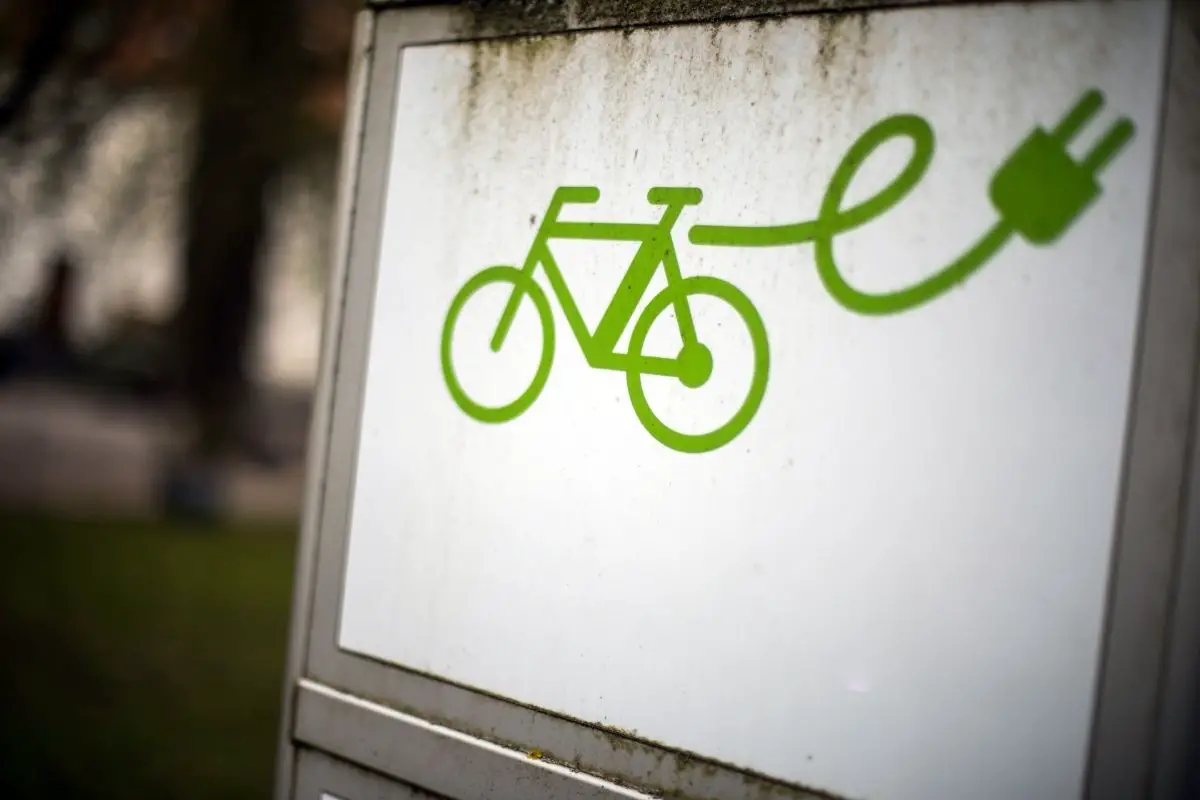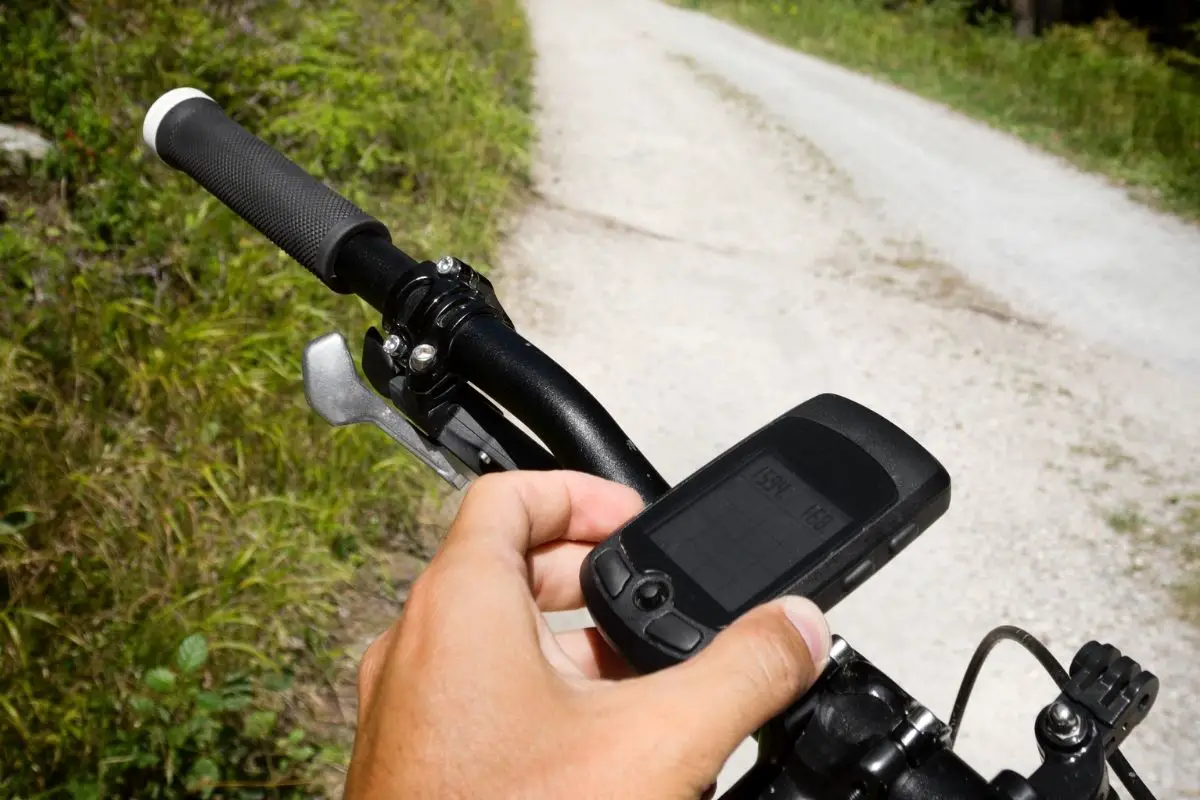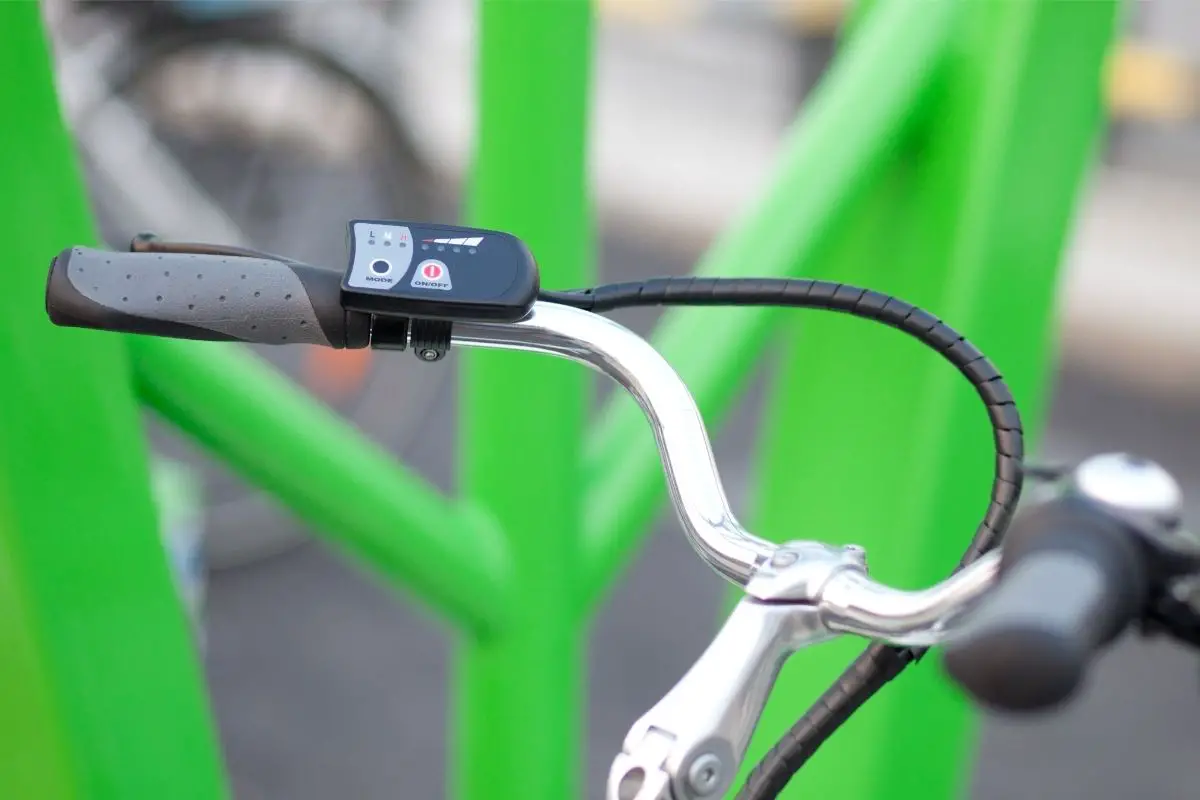Last Updated on March 18, 2022 by
Electric bikes are becoming more popular all over the world – understandably, as they are a major upgrade to traditional bikes.
E-bikes allow you to ride faster without pedaling so hard, getting you to the places you need to be in record time. Some people are even swapping their motorized vehicles for electric bikes.

Despite this fact, however, most countries still see e-bikes as traditional bikes and therefore don’t require you to have a license to drive one.
With that being said, some states in the USA have different laws and regulations that mean you might need a license to ride your e-bike.
Let’s take a look at this in more detail, as well as some other points that you might need to know before jumping on your electric bike again.
The Electric Bike Law
Electric bikes have been recognized by the federal government since 2002, in which congress amended the original definition of e-bikes. Congress did this by creating and implementing the law HR 727, which ruled out the original definition of e-bikes set by the Consumer Product Safety Commission.
Law HR 727 states that an electric bike should be defined as a “two- or three-wheeled vehicle with fully operable pedals and an electric motor of fewer than 750 watts (one horsepower), whose maximum speed on a paved level surface, when powered solely by such a motor while ridden by an operator who weighs 170 pounds, is less than 20 mph.”
Despite the federal law definition stating that the e-bike should be less than 20 MPH, bikes that are ridden both with human power and motorized power can reach speeds of up to 28 MPH legally.
Law HR 727 covers three classes of e-bikes, meaning that no license is required for any of them. However, e-bike laws now differ under state laws, so you need to be sure of the laws surrounding electric bikes by your state.
Are Electric Bikes Legal In The USA?
Yes, electric bikes are legal in the USA. They can be ridden without license in some states, while others might require you to have the proper documentation before getting onto one.
No matter what state you are in, as long as you abide by the state laws surrounding electric bikes, they are legal to ride and keep.
Do You Need A License For An Electric Bike?
Some states require you to have a license for your e-bike before you ride it. However, the number of states that do not require you to have a license is much higher than the number of ones that do.
Most states have specific laws regarding the speed and power of your e-bike. You will need to follow the state laws of wherever you are riding your e-bike. This makes it extremely important that you read up on the laws before traveling with your electric bike.
Most US states accept that there are three classes of electric bikes, which we will look at now.
Class 1
These e-bikes are otherwise known as pedal-assists or pedelecs. They have a motor that will not exceed a maximum speed of 20 MPH, and the bike will only operate when the rider is pedaling.
While some class 1 e-bikes do come with a throttle, others do not. This throttle is used to offer the rider an extra boost of speed as they use the pedals. Class 1 e-bikes cannot be used without the rider pedaling.
Class 2
Class 2 e-bikes is another name for throttle e-bikes, and they have a motor that is limited to a 20 MPH top speed. They have a throttle that allows the rider to experience a boost in speed without them having to pedal.
However, you can still pedal while using the throttle if you want to. This is often referred to as a hybrid bike as you can choose how much power you want to exert in order to ride it. You will be able to use these bikes on bike paths made for normal bikes.
Class 3
Finally, Class 3 bikes are otherwise known as speed e-bikes and can reach top speeds of 28 MPH thanks to a higher-powered motor. You can get some speed electric bikes with a throttle while others come without.
The motor will be either 750 watts or 1000 watts, making them much more powerful than Class 1 or Class 2 e-bikes. Class 3 e-bikes will often come with a speedometer and might not be allowed to be ridden on specific roads.
Alternate Two-Tiered System
New Jersey and West Virginia class e-bikes with a two-tiered system rather than there being three tiers.
New Jersey follows a system that doesn’t consider low speed electric bikes to require a license or insurance. In the above three-tiered system, these are your Class 1 and Class 2 bikes.
Class 3 bikes are considered to be ‘motorized bikes’ and you will need a driver’s license and registration to drive one of these.
In West Virginia, they allow you to ride Class 1 and Class 3 bikes, but not Class 2 bikes that are moved only by a motor.
Electric Bike Laws By State
Using the above tiered systems, many states require some sort of licensing when riding an e-bike. They are still classified as regular bicycles and therefore have set speed limits, traffic codes, and maximum power outputs that they need to abide by.
Here is a list of the states in which you will need a license to ride your electric bike:
– Alabama
– Alaska
– Massachusetts
– Missouri
– New Mexico
– North Dakota
While the above states have not specifically created their own laws surrounding electric bikes, the bike will fall under another classified vehicle. This vehicle will have laws surrounding it, meaning that they too apply to electric bikes.
Where Can You Ride An Electric Bike Without A License?
There are a number of states that you do not currently need a license to ride your e-bike. You do not need to register, insure, or license your electric bike. Having said this, there might be exempt cases in which you will need to do these things.
Here is a list of the states that do not currently require you to have a license for your electric bike.
- Arizona (Riders are able to use their e-bike on bicycle paths and greenways.)
- Arkansas
- California
- Colorado
- Connecticut
- Florida
- Georgia
- Idaho (A law in which motorcycles and mopeds cannot be classified as e-bikes allows owners exemption from license and registration procedures.)
- Illinois
- Indiana
- Louisiana
- Maine
- Maryland
- Michigan
- New Hampshire
- New York
- Ohio
- Oklahoma
- South Dakota
- Tennessee
- Texas
- Utah (Riders are able to use their e-bike on bicycle paths and greenways.)
- Virginia
- Washington (Riders are able to use their e-bike on bicycle paths and greenways.)
- Wisconsin
- Wyoming (Localities are able to require a registration fee for e-bikes as well as traditional bikes.)
All of the above states, while you do not necessarily need a license for your e-bike, still require you to have a label on the bike. This should state the classification number, top speed, and power of the motor.
Again, we want to stress that you should always check the laws surrounding e-bikes before riding one to ensure that no changes have been made. You might be exempt and require a license, which is why it is always important to check.
What About The States Not Mentioned?
The states that we have not mentioned above will have a different way of classifying electric bikes that falls out of the two- or three-tiered system that we have outlined above.
This does not mean that you will not need a license for these states, but it also doesn’t necessarily mean that you will.
Make sure to check their individual laws surrounding e-bikes so that you can be sure that you are riding your bike while remaining within the law.
Can You Ride An Electric Bike With A Suspended License?
The answer to this isn’t as clear cut as you’d perhaps like it to be. Largely, whether you will be able to continue using your e-bike on a suspended license will depend on why it was suspended in the first place.
Some states will allow you to ride your e-bike without you disclosing why your license was suspended. Others, on the other hand, might not allow you to ride any vehicle other than a regular bike.
California is an example of a state that will not allow you to ride anything other than a traditional bike.
If your license is suspended but you want to keep riding your e-bike, you might benefit from talking with a professional lawyer who can help you with the state laws that you are currently under.
Each state will have different rules around this subject, so do your research on the correct one. Again, if you are traveling with a suspended license and your e-bike, research this state’s laws as well.
Electric Bike Law Changes
Before the 4th quarter of 2020, many states still considered e-bikes to be motorized vehicles. As such, you would have needed to obtain a driver’s license to operate an e-bike.
However, with the new laws that were passed during the COVID-19 pandemic, many states now consider e-bikes to fall into the same category as bicycles. Therefore, you no longer need a drivers license to operate an e-bike.
This is true for almost all states bar a few. We hope that, in the future, the rest of the states will classify e-bikes as something other than motorized vehicles.
Why Shouldn’t E-Bikes Be Classified As Motorized Vehicles?
Some people believe that Class 1 and Class 2 e-bikes should not be considered motorized vehicles as they do not exceed a speed of 20 MPH.
Riders of regular bikes will often reach speeds between 10 and 14 MPH. However, after a few weeks of training, they might be able to reach 15 to 20 MPH. Professional cyclists can hit a top speed of up to 30 MPH!
Considering this, electric bikes that cap out at 20 MPH are not that much faster than regular bikes. Due to this, people think that e-bikes are better suited under the classification of regular bikes as opposed to motorized vehicles – despite the fact that they are technically powered by motors.
Another reason why people consider e-bikes to be more like regular bikes than motorized vehicles is because most use pedals alongside an optional motor.
Electric Bike Rules And Regulations
Electric bike rules and regulations are often varied depending on which state you are in. However, there are a number of rules that can be seen across multiple states, if not all of them.
Perhaps the most important rule that every electric bike owner should know is that you will need a license if your e-bike can give a moped a run for its money. If your electric bike can reach speeds of a motorcycle, you will more than likely need a license.
If you’re confused as to whether your e-bike fits under this category, check its maximum speed output and the power output of the motor. If the top speed exceeds 28 MPH and the power is over 1000 watts, most states will classify it as a motorized vehicle.
If your bike exceeds this top speed and power outage, the National Highway Traffic Safety Administration (NHTSA) and the Department of Transportation (DOT) will then regulate it as a motorized vehicle and you will need to follow the safety requirements of one.
Do You Have To Wear A Helmet With An Electric Bike?
Most states will require you to wear a helmet with your e-bike no matter what. Others will have age restrictions on when you have a choice whether to wear one or not. A few states will allow you to choose to wear one or not no matter your age.
California, Dakota, Georgia, Louisiana, New York, Ohio South, Tennessee, Virginia and West Virginia all require you to wear a helmet, no matter your age, when riding a Class 3 electric bike.
Louisiana and Pennsylvania require all riders under 12 years old to wear a helmet, whether it be an electric bike or a regular bike.
New York is slightly less lenient and requires all riders under the age of 14 to wear a helmet. Less lenient again, West Virginia requires riders under 15 years old to wear a helmet.
Alabama, Connecticut, Florida, Georgia, Hawaii, Kansas, Maine, Maryland, Massachusetts, New Hampshire, North Carolina, Oregon, Rhode Island and Tennessee D.C all require bike riders to wear a helmet if they are under the age of 16.
New Jersey’s age requirement to have to wear a helmet is 17 years old, while California, Delaware, and New Mexico require riders under 18 years old to wear helmets.
Colorado, Indiana, Michigan, South Dakota and Utah also all require riders under 18 years old to wear helmets, but only while riding Class 3 e-bikes.
States that do not have any laws surrounding riders wearing helmets are: Arizona, Idaho, Illinois, Oklahoma, Texas, Washington, Wisconsin, and Wyoming. Likewise, states that we have not mentioned do not have any helmet requirements.
Summary
Overall, it depends on which state you are in whether you can ride your electric bike without a license or not. Some states are much stricter than others.
Most electric bikes will not require a license as they do not exceed top speeds of 28 MPH. However, if your e-bike is Class 3, it might exceed top speed limits and be referred to as a motorized vehicle. This would require a license.
The most important thing to remember is that you should always read up on your state’s laws on e-bikes, as 50 states will all have different regulations surrounding them. If you are traveling with your e-bike, make sure to read up on that state’s laws too.
- Why Electric Vehicles Are Not Popular - January 29, 2023
- How Long Do Tesla Batteries Last Per Day? Battery Facts - January 25, 2023
- Do Electric Vehicles Have Air Conditioning? - December 21, 2022










